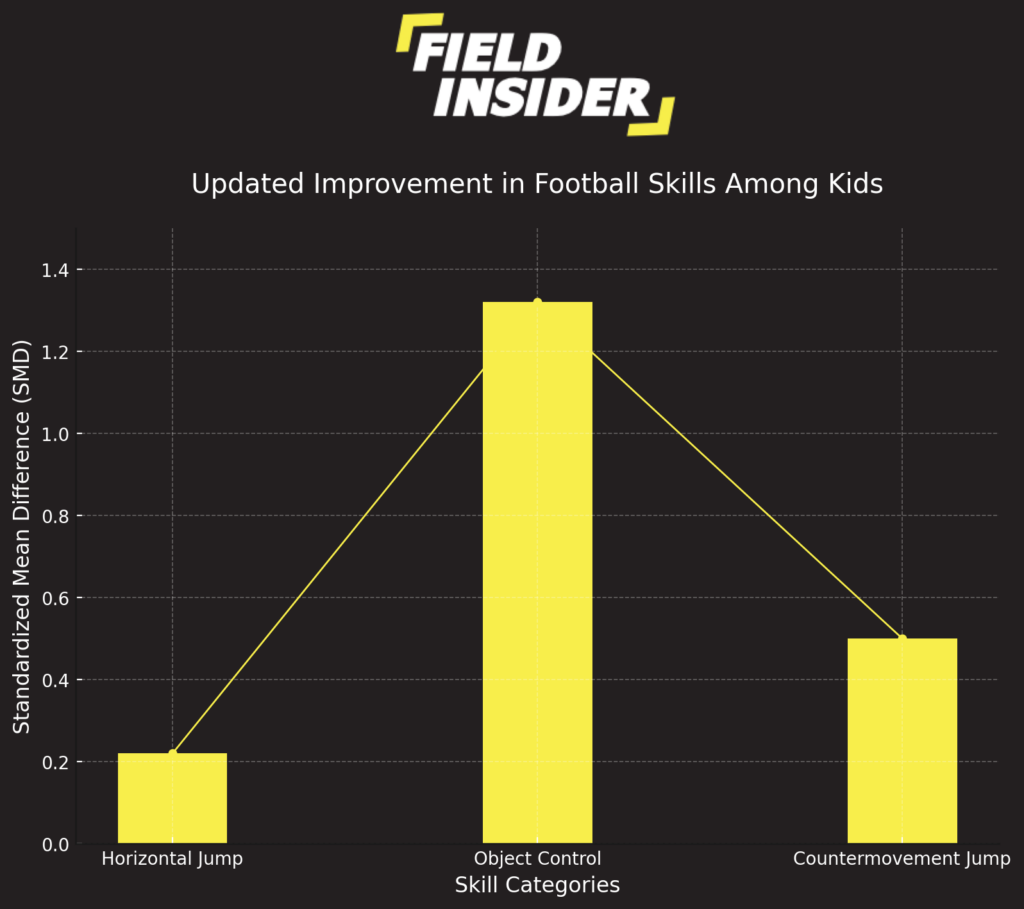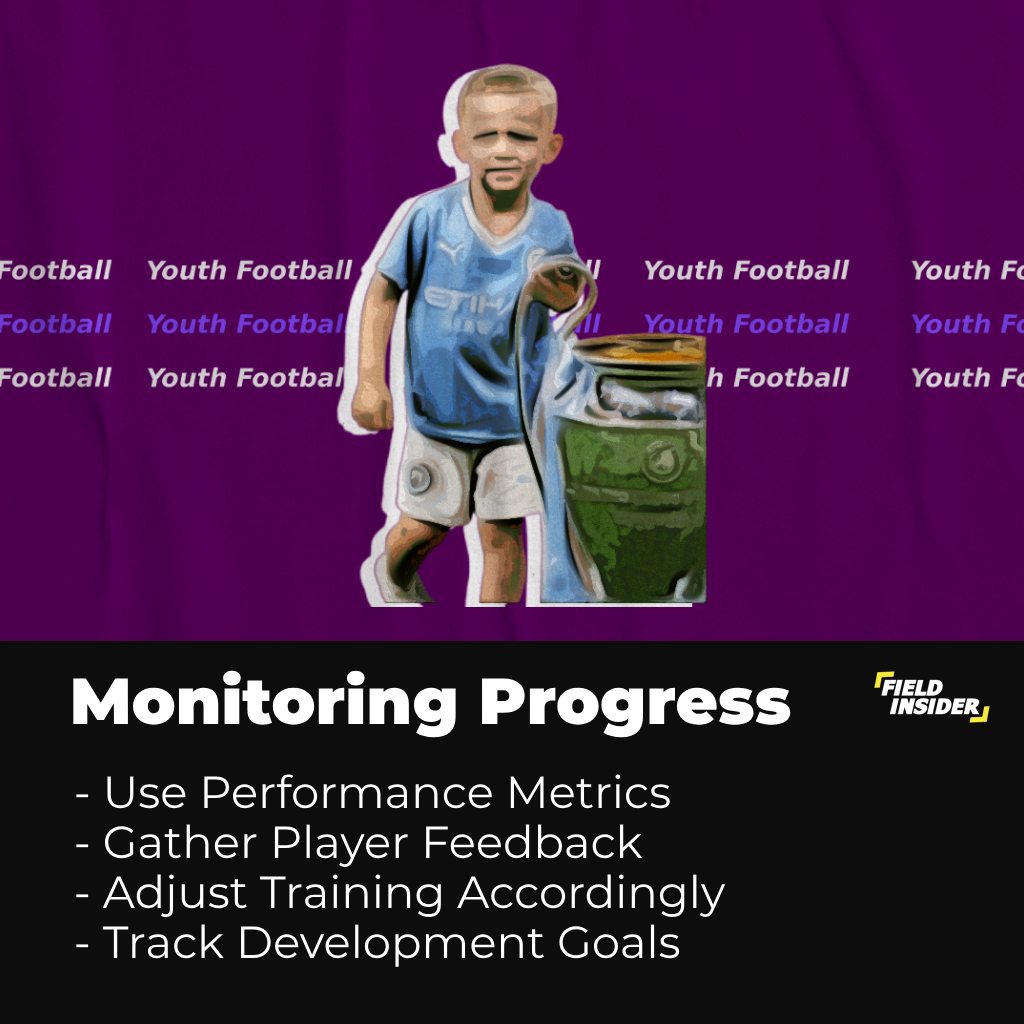Kids Practising Football: How Often Should They Train?
Training frequency is a crucial element in the overall development of kids practising football, significantly influencing their skills, fitness, and passion for the game.
This article explores the ideal training regimen for young athletes, emphasizing the need to tailor training to specific age groups, balance intensity with adequate rest, and continuously adapt based on feedback and performance.
By understanding and implementing these principles, coaches and parents can create an environment for kids practising football that nurtures talent while prioritizing the well-being of each player, ensuring they not only improve but also enjoy every step of their football journey.
key takeaways
| Key Takeaway | Details |
|---|---|
| Understanding Youth Development in Football | Tailor training to the player’s age, skill level, and physical maturity. Balance training intensity with rest. |
| Guidelines for Training Frequency | Follow age-appropriate training frequencies. Integrate varied training sessions including strength and conditioning. |
| Factors Affecting Training Frequency | Consider school commitments, seasonal variations, and individual needs in planning training schedules. |
| Balancing Quality and Quantity | Emphasize high-quality training sessions over sheer quantity to enhance skill development and retention. |
| Rest and Recovery | Schedule regular rest days and incorporate active recovery activities to prevent injuries and burnout. |
| Monitoring Progress and Adjusting Training Frequency | Use performance metrics and player feedback to adjust training frequency and content effectively. |
Understanding Youth Development in Football

Factors Influencing Training Frequency
The appropriate training frequency for kids practising football varies, shaped by their physical growth, psychological development, and the technical demands of the sport. It is essential for coaches to create a flexible training schedule that can adapt to the changing needs of growing athletes.
The aim should be to balance technical skill development with physical conditioning, ensuring that training remains challenging yet manageable to prevent injuries . Monitoring player progress & adjusting frequency accordingly can optimize development and maintain their enthusiasm for the sport.
Considerations for Age, Skill Level, and Physical Development
Training programs for kids practising football must be tailored to their age, skill level, and physical maturity. For the youngest players, the focus should be on developing basic motor skills and instilling a love for the game through enjoyable activities.
As players grow older and their skills improve, the training becomes more structured, with increased emphasis on tactical knowledge and physical conditioning. This gradual progression ensures that training is both age-appropriate and challenging, fostering skill improvement and confidence.
Importance of Balancing Training Intensity and Rest
Maintaining a healthy balance between rigorous training sessions and sufficient rest is critical for the development of young football players. Intense training is necessary to advance their skills and physical capabilities, but without enough rest, young athletes are at a higher risk of developing injuries.
Coaches should incorporate planned rest days and consider the individual recovery needs of each player to ensure they remain physically and mentally sharp. Effective rest strategies not only prevent physical overuse but also help in mental recovery, keeping players motivated and engaged in game.
Guidelines for Training Frequency
Expert Recommendations for Different Age Groups
Training frequency should be carefully tailored to the age and developmental stage of kids practising football.
| Age Group | Recommended Training Frequency | Focus Areas |
|---|---|---|
| Under 8 years | 2-3 sessions per week | Fundamental skills, fun activities |
| Ages 8 to 12 | 3-4 sessions per week | Technical skills, basic tactical knowledge |
| Ages 12 to 16 | 4-5 sessions per week | Advanced tactics, physical conditioning |
This table provides a clear guideline on how often young players should train, tailored to their developmental needs, to ensure they grow into well-rounded athletes while enjoying their sport.
Weekly Training Schedules for Optimal Skill Development
Developing a structured weekly training schedule is crucial for the balanced growth of young football players. A typical week might include sessions focused on technical skills, tactical understanding, and physical fitness. For instance, younger players might benefit from drills that improve basic skills.
Including variety in training sessions not only keeps the players engaged but also ensures that all aspects of the game are being developed progressively.
Integrating Strength and Conditioning Sessions
Incorporating strength and conditioning into the training regimen of youth football players is essential for enhancing their physical capabilities and preventing injuries. These sessions should be age-appropriate and designed to improve overall athleticism rather than just football-specific skills.
Activities might include core strengthening exercises, agility drills, and endurance training. For youth players, it’s important that these sessions are conducted under the supervision of qualified professionals who can ensure that exercises are performed correctly and safely.
Enhancements in Children’s Movement Skills Through Football Practice
The bar chart illustrates findings from the study, “The effects of football practice on children’s fundamental movement skills: A systematic review and meta-analysis.”

It highlights three core areas: Horizontal Jump, Object Control, and Countermovement Jump. Horizontal Jump depicts moderate improvement, visible through a notable increase in performance metrics. Object Control, marked as the most enhanced skill, shows a significant upswing.
In contrast, the Countermovement Jump remains largely unchanged, displaying minimal gains across the practice period. This visual encapsulation aids in understanding the differential impacts of football training on varied movement abilities in children.
Factors Affecting Training Frequency
School Commitments and Academic Workload
The delicate balance between academic responsibilities and training schedules is a critical consideration for young football players. School commitments can significantly influence the amount of time available for sports.
Coaches and parents should collaborate to develop schedules that allow athletes to excel academically while still participating effectively in football. This balance is crucial in fostering a holistic development environment that supports both educational success and athletic growth.
Seasonal Variations in Training Intensity
Seasonal changes play a significant role in dictating the training frequency and intensity for youth football players. During the preseason, the focus is often on building fitness and integrating tactical plays, which might call for more frequent and intense training sessions.
Conversely, during the competitive season, the emphasis may shift towards maintaining fitness and tactical sharpness. Understanding these seasonal nuances is key for coaches to schedule training that optimizes player performance and health throughout the year.
Individual Player Needs and Goals
Personalizing training frequency to meet the individual needs and aspirations of each player is fundamental in a youth football program. Different players may have varied developmental timelines; some may need more time to develop coordination and physical strength than others.
Coaches should assess each player’s unique strengths and weaknesses, setting personalized goals that can be realistically achieved through customized training frequencies. This targeted approach not only enhances player development but also boosts motivation.
Balancing Quality and Quantity

Emphasizing the Importance of Quality Training Sessions Over Quantity
Quality trumps quantity when it comes to training youth football players. Effective training sessions are those that are well-planned and focus on specific skill sets, ensuring that each session contributes meaningfully to the players’ development.
Coaches should aim for high-quality drills that challenge the players mentally and physically while being manageable and not repetitive. This approach ensures that players remain engaged and motivated, extracting more value from each session rather than merely counting the hours spent on the field.
Strategies for Maximizing Learning and Skill Retention During Training
To maximize learning and retention, training sessions should incorporate a variety of learning modalities, i.e. visual, auditory, and kinesthetic approaches. Such as, using demonstrations, verbal instructions , and hands-on practice can help cater to different learning preferences among players.
Coaches can further enhance skill retention by regularly revisiting key concepts and providing immediate, constructive feedback. This helps players understand their progress and areas needing improvement, solidifying their learning and boosting their confidence.
Rest and Recovery
Importance of Rest Days in Preventing Burnout and Injuries
Scheduled rest days are essential for the health and well-being of youth football players. These days provide crucial time for the body to repair and strengthen, preventing injuries commonly associated with overuse.
Moreover, mental recovery is equally important, as rest days can help prevent psychological burnout. Coaches should ensure that the training calendar allows for adequate rest, emphasizing that rest is just as important as training itself for optimal athlete development.
Incorporating Active Recovery Activities into the Training Routine
Active recovery can be a valuable component of a youth football training program. Activities like light swimming, yoga, or even gentle stretching can aid in muscle recovery, reduce soreness, and keep the players lightly active.
These activities help maintain the players’ fitness levels without putting undue stress on their bodies. Implementing such practices helps in the faster rejuvenation of players, ensuring they are ready and in peak condition for the next intense training session or match.
Monitoring Progress and Adjusting Training Frequency

Using Performance Metrics to Gauge Training Effectiveness
Regular use of performance metrics is crucial for evaluating the effectiveness of training programs for youth football players. Metrics can include physical benchmarks, skill assessments, and game performance analysis.
By tracking these indicators, coaches can identify areas where players are excelling or need improvement. This data-driven approach allows for targeted adjustments to training, ensuring that each session is maximally beneficial and aligned with the players’ development goals.
Adjusting Training Frequency Based on Player Feedback and Performance Evaluations
Feedback from players is essential in refining training frequency and content. Players’ insights into what they find challenging, enjoyable, or tiring can provide valuable information that impacts training adjustments.
Coupled with regular performance evaluations, this feedback can guide coaches in fine-tuning the training regimen. Adjustments might include altering the frequency of sessions, altering the intensity, or shifting the focus of training to better meet the players’ needs and enhance their overall development.
Conclusion
In conclusion, optimizing training frequency for youth football players is pivotal for their development and enjoyment of the game. Tailoring training sessions to age-specific needs, focusing on quality over quantity, and balancing rigorous activity with adequate rest are essential strategies.
Additionally, monitoring progress and adjusting training based on player feedback ensures that programs remain effective and responsive to individual needs. By adhering to these principles, coaches and parents can help kids practising football grow into skilled, healthy, and passionate football players.








